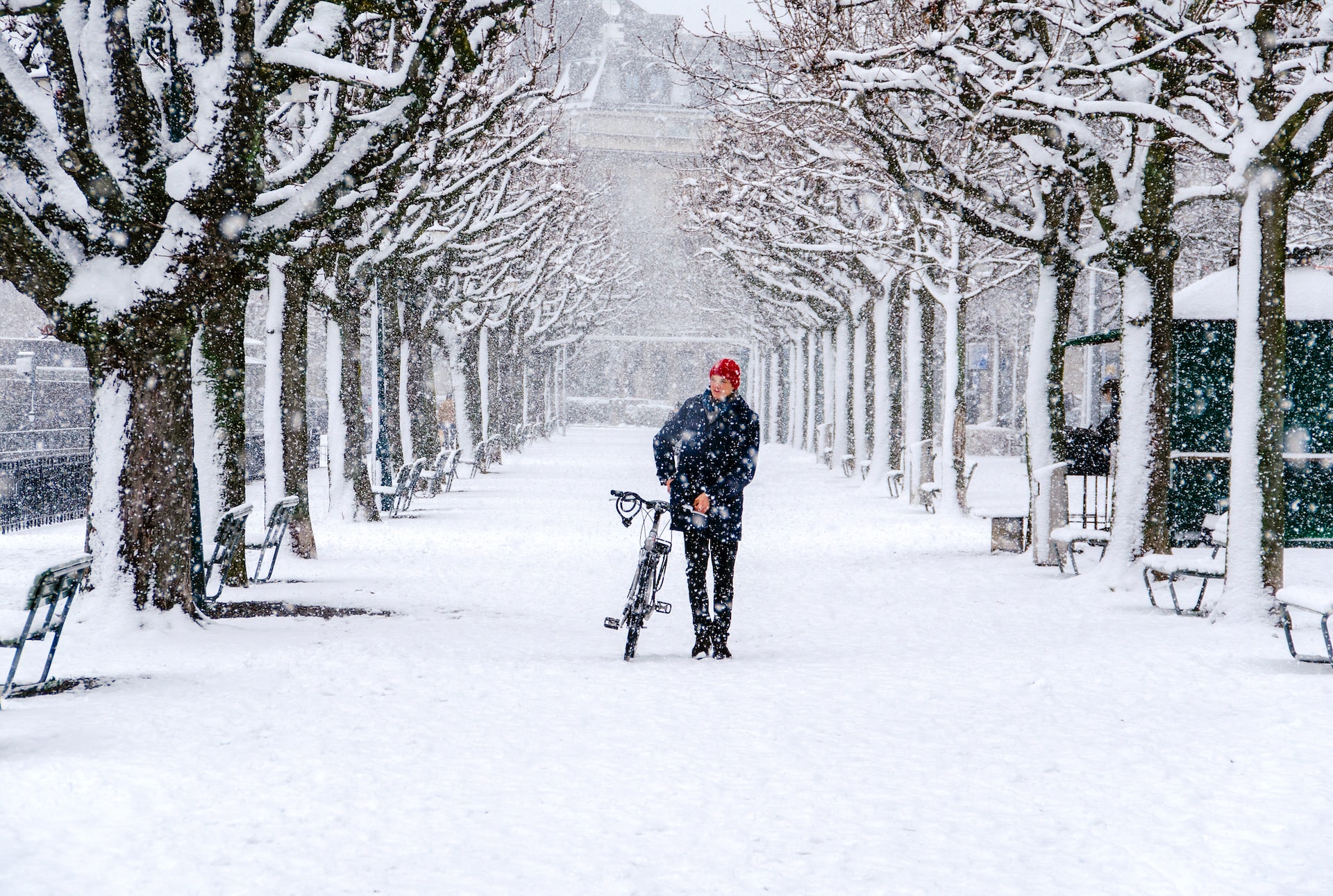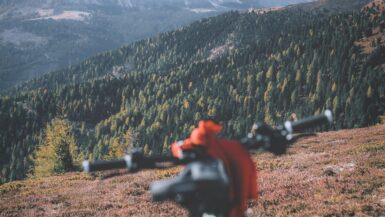Taking your mountain bike out for a spin in winter and cold weather can be a thrilling and empowering experience. There is nothing quite like the feeling of taking on some of the most challenging terrain and temperature on the planet – even in the cold. If you are looking to take your mountain biking activities to the next level and are considering hitting the trails in winter, then it is essential to be prepared. This article will help you do that by providing tips and advice on how to ride a mountain bike in winter and cold weather.
Gear and Safety Considerations
When mountain biking in the winter and cold weather, it is essential to be warm and dry. Layering your clothes and wearing appropriate accessories is critical. Start with a generous base layer such as a synthetic material or merino wool, a breathable mid-layer such as a fleece pullover or lightweight jacket, and a waterproof outer layer. Don’t forget to cover your head with a warm hat and your hands with gloves or mittens. Windproof and waterproof boot covers can be helpful when temperatures drop.
Improving Visibility
In winter and cold weather, visibility can be a safety concern. Wear bright, reflective clothing to ensure you’re visible to other cyclists or the general public. Use front and rear bike lights to further increase your visibility.
Tire Choice
Tires with more treads provide better grip in snow and wet weather. Consider investing in mountain bike tires specifically designed for winter and cold weather. Tubeless tires are another great choice to consider.
Safety Gear
In addition to warm clothing, safety gear such as a helmet, elbow pads, and knee pads are also essential when mountain biking in the winter and cold weather.
What Type of Bike is Best for Winter Riding?
When choosing a mountain bike for winter riding, you should pick one designed to handle the unpredictable and extreme weather conditions that winter brings. You should select a mountain bike equipped to face the snow and ice and can also handle any other terrain you might encounter during your ride. You want to ensure you have good brakes and a sturdy and dependable bike to conquer the winter elements.
Essential Winter Bike Features
When selecting a bike for winter riding, the essential feature has a sturdy frame. A mountain bike made of aluminum or steel is a good option, as it will take more significant impacts from uneven surfaces and stay strong in extreme temperatures. It would also help to choose a bike with wide tires that can provide a good grip on winter terrain.
Additional Features for Cold Weather Riding
Riding in winter can also require extra features to stay comfortable and safe. Besides getting a bike with wide tires, you should also look into mountain bikes with the suspension to protect you from any bumps or jolts you might encounter due to icy terrain. It would be best if you also considered a bike with fenders, which will keep the slush, mud, and ice away from your body and keep you dry.
Mountain Bikes with Specialized Winter Capabilities
For those looking to ride on snow and ice, there are specially designed mountain bikes with studs on the tires that can provide a better grip on slippery surfaces. These specialized mountain bikes are designed to help keep you safe and stable when riding in winter weather.
Choosing a Winter Riding Route
When you are looking to go mountain biking in the winter and cold weather, the first step is to plan your ride. From clothing to route selection to your bike setup, you must be well-prepared to ensure a safe and enjoyable ride. One of the most important factors is choosing a winter riding route.
Analyzing All-Weather Conditions While Choosing a Winter Riding Route
It is always important to stay aware of the weather when mountain biking in the winter. Start by checking the forecast for the day, and ensure that the temperature and precipitation are suitable for outdoor activity. If there is significant snow or rain, it can be challenging to navigate trails, so plan accordingly.
Focusing on What Type of Terrain is Accessible
Once you have confirmed that the weather will be appropriate for a winter ride, consider what terrain is open to you. In many cases, trails will be more challenging to navigate in the winter, as snow and ice can limit accessibility. Before you plan your route, check with the local trail network to find out which areas are open to riders.
Finding the Right Balance of Risk Versus Reward
Finding a balance between risk and reward is vital when choosing a winter riding route. While you may want to venture into more challenging terrain, it is critical to keep safety in mind. Make sure that you are taking the proper precautions and prepared for whatever may come your way.
Bringing the Necessary Supplies
Finally, you must bring the necessary supplies for a winter ride. Make sure you have dressed appropriately for the weather and have enough sustenance and hydration to get you through your ride. If necessary, bring a basic repair kit in case of any mechanical issues.
By taking the necessary steps to plan and prepare for a winter mountain bike ride, you can ensure that you have a safe and enjoyable experience. Check the weather, choose a suitable route, and bring the necessary supplies to get you through the ride. Proper planning allows you to safely explore the trails and enjoy the winter months on the mountain bike.
Adjustments to Riding Techniques
To ride a mountain bike in cold weather, you must wear suitable clothing. Dress in layers that can easily be added or removed depending on your level of exertion throughout the ride. Invest in a good pair of gloves and wear a warm hat and a neck gaiter to keep the wind off your face and body.
Modify Riding Techniques
During the winter months, you will need to adjust some of your usual riding techniques to ride more efficiently and safely. It would help if you lowered the tire pressure of your mountain bike to increase the tires’ grip on the trails. You may also need to adjust your braking because the tracks will be more slippery. It would be best if you also focused on riding in a straight line and not leaning the bike in the corners as you would typically do.
Avoid Hazards in Cold Weather
You must be aware of more hazards than usual when riding your mountain bike in the winter. Ice, downed branches, and mud can all be hazards that can cause you to crash. It would be best if you also cautioned when going downhill, as the trails may be more slippery than usual. It would help if you also looked out for black ice on the trails, which is ice that is difficult to see but can cause your tires to lose grip.
Tips and Techniques for Cold Weather Riding
One of the most important things to do before you ride a mountain bike in cold weather is to prepare appropriately. This includes dressing in multiple layers, wearing a hat and gloves, and drinking plenty of water. It is also essential to check the forecast, plan your route and pack extra supplies in an emergency.
Maintaining Your Bike for Cold Weather Riding
To ensure that your mountain bike is ready for cold weather riding, it is vital to do regular maintenance. This includes changing the bike’s oil, checking the brakes, and replacing worn-out components. You may also consider changing your tires to winter-specific ones if you use your bike in the snow.
Riding Safely in Cold Weather
When riding in the cold, there are some extra precautions you should take to ensure a safe ride. One of the most important things is to watch for icy patches and other dangerous conditions. Also, be sure to wear a helmet and have a plan for what to do in case of an emergency. It is also important to stay visible by using reflectors and lights if you plan on riding after dark.
Warm Up Before Riding
Riding a mountain bike in cold weather can be challenging if your muscles are not warmed up. To prepare your body for the cold, your muscles should be warmed up before you start riding. This can be done by doing some basic stretching or going for a short walk before your ride.
Managing Wind Chill
When riding in cold weather, it is crucial to consider the wind chill. The wind can significantly decrease your body temperature, so it is essential to dress appropriately for the weather. Wear a windproof outer layer and use thicker gloves and a hat to keep out the cold. Also, be sure to ride with a friend or in a group on windy days.
Monitor Hydration and Nutrition
When riding in cold conditions, it is easy to forget to stay hydrated and get enough nutrition. However, staying hydrated and eating correctly can help to prevent fatigue and hypothermia. For this reason, it is essential to pack extra snacks and water and to drink regularly throughout your ride.
Preparing for a Cold Weather Bicycle Adventure
Riding a mountain bike in the winter and cold weather is possible, but there are a few precautions to take. Layering clothing is vital to keep your body warm and mobile, and you should also take a small repair kit in case something breaks. Adjust your bike to reach its optimal performance in the cold, make sure your tires are in good condition, and take your time getting used to the slippery snow and icy terrain. With the proper knowledge and preparation, winter biking can be a rewarding and adventurous experience.






Leave a reply